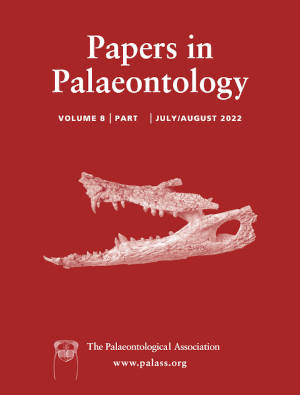Article: Systematics, ontogeny and palaeobiogeography of the genus Orthacanthus (Diplodoselachidae, Xenacanthiformes) from the lower Permian of France
Publication: Papers in Palaeontology
Volume:
8
Part:
6
Publication Date:
2022
Article number:
e1470
Author(s):
Vincent Luccisano, Alan Pradel, Romain Amiot, Jean-Marc Pouillon, René Kindlimann, Jean-Sébastien Steyer, and Gilles Cuny
DOI:
10.1002/spp2.1470
Abstract
Abstract The erection of Orthacanthus buxieri Heyler \& Poplin from the lower Permian locality of Buxières-les-Mines (Allier, France) was based on a poorly prepared specimen with only a few parts of its anatomy visible. The supposedly related teeth have been regarded as possibly belonging to O. kounoviensis, a species already known from the Carboniferous–Permian of Germany and Czech Republic. The holotype of O. buxieri requires extensive preparation before it can be revised, but the description of Orthacanthus isolated teeth and dorsal spines from Buxières-les-Mines nevertheless provides useful information, especially given that no precise description of this material has been provided so far. The aim of this description is to better understand the evolutionary history of the French Orthacanthus and its relationships with the other European species. The studied material is assigned to O. kounoviensis. This is the latest occurrence of this genus in Europe and the presence of both juvenile and adult teeth indicate that Buxières-les-Mines was probably one of the last suitable environments for its reproduction. We also identify Orthacanthus cf. kounoviensis from the Muse oil-shale bed, the first record of this genus in the Autun Basin. This brings into question the relationships between the different Carboniferous–Permian basins of the Northern Massif Central and suggests that they could still have been in connection during the lower Permian, in contrast to the central European basins, which seem to be more isolated from each other.
